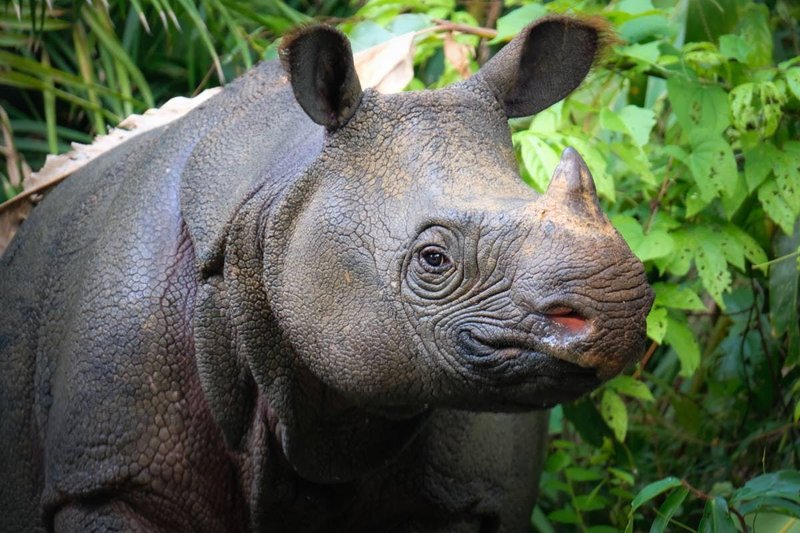
The Javan rhinoceros, found only in Indonesia’s Ujung Kulon National Park, is one of the most endangered large mammals on the planet. There are only around 70 of them left in existence. This scarcity adds to their mystique but also highlights their importance as a keystone species. Let’s dive into how the Javan rhinoceros influences its habitat and the various ways it contributes to maintaining ecological balance.
What Is a Keystone Species?
Before we get into the specifics of the Javan rhinoceros, it’s essential to understand what a keystone species is. Think of it like a linchpin in a wheel; without it, the whole structure could wobble and collapse. Keystone species have a disproportionately large impact on their environment relative to their abundance. For instance, if you remove a keystone species from an ecosystem, it can lead to dramatic shifts—sometimes even causing other species to go extinct.
In the case of the Javan rhinoceros, its role as a keystone species is like that of a gardener nurturing their plants. By feasting on vegetation, it helps manage plant growth and creates a more diverse habitat. This grazing encourages the growth of different plant species, which in turn supports a wide variety of other animals and insects that rely on these plants for food and shelter.
Habitat Management Through Grazing
One of the most direct ways the Javan rhinoceros shapes its ecosystem is through grazing. These majestic creatures primarily feed on young leaves, shoots, and shrubs. You might be wondering, “What’s so special about that?” Well, when they munch on specific plants, they help prevent any one species from overrunning the area.
This grazing behavior promotes a diversity of plant life, allowing different species to thrive. Imagine a buffet where everyone gets to taste a bit of everything—that’s what the Javan rhino does for its environment. By keeping certain plants in check, it allows other plants to grow and flourish. A healthy mixture of vegetation, in turn, attracts various insects and animals, creating a vibrant, balanced habitat.
Seed Dispersal and Plant Growth
Plants have some clever strategies for spreading their seeds, and the Javan rhinoceros plays a crucial role in this process too. As these animals munch on fruits or seeds, they often swallow them whole. Once the rhino digests the food, the seeds can pass through its digestive system unharmed.
When these seeds eventually sprout, they have a better chance of growth than if they remained directly on the ground. This act of seed dispersal helps plants to colonize new areas, ensuring their species’s survival. You can think of Javan rhinos as nature’s delivery service—carrying seeds to new locations where they can grow into healthy plants.
Supporting Biodiversity
Biodiversity is essential for a thriving ecosystem. It provides resilience against diseases and environmental changes. The presence of the Javan rhinoceros enhances biodiversity in a few ways. As they graze and help with seed dispersal, they create various niches for other species to inhabit.
Smaller animals, insects, and even birds benefit from the changes in their habitat. For instance, a diverse range of plants means more food options and shelter for smaller creatures. Think of it as a community where everyone contributes to the overall well-being—when the Javan rhino thrives, so do many other species in its vicinity.
The Ripple Effect of Decline
Now, here’s the not-so-pleasant part. The declining numbers of the Javan rhinoceros have significant ramifications. With fewer rhinos, the balance of their ecosystem is at risk. If these giants vanish entirely, we could see an overabundance of certain plant species, which would choke out others.
This imbalance could lead to a decline in the diversity of both plants and animals. Some researchers liken it to a game of Jenga—remove one block, and the whole structure could come crashing down. Maintaining the rhino’s population is essential not just for their survival but for the health of the entire ecosystem they inhabit.
Conservation Efforts
So, what can be done to protect these remarkable creatures and, by extension, their ecosystem? Conservation efforts are crucial. Organizations and local governments are working tirelessly to preserve the Javan rhinoceros’s habitat, monitor their population, and raise awareness about their plight.
For instance, protected areas like Ujung Kulon National Park are critical to safeguarding their remaining numbers. These parks provide safe havens from poaching and habitat loss, allowing rhinos to thrive in a controlled environment. Additionally, education campaigns inform local communities about the importance of protecting these magnificent animals, fostering respect and understanding.
The Role of Humans in Ecosystem Balance
Finally, it’s worth reflecting on our role in this intricate web of life. Humans can either help or harm ecosystems. While we’ve contributed to habitat destruction and the decline of species, we also have the power to enact positive change.
By supporting conservation efforts, reducing our footprint, and spreading awareness, we can play a part in preserving the Javan rhinoceros and its habitat. Think of it as a shared responsibility—like being part of a team trying to win a game. Every action counts, whether it’s donating to conservation groups or simply educating ourselves and others about the importance of these incredible creatures.
In conclusion, the Javan rhinoceros is more than just a big, horned animal. It serves a vital role in its ecosystem, promoting biodiversity and maintaining the delicate balance of its habitat. As we learn more about these majestic creatures, it becomes increasingly clear that protecting them is not just about saving a single species but about preserving the world we all share.

